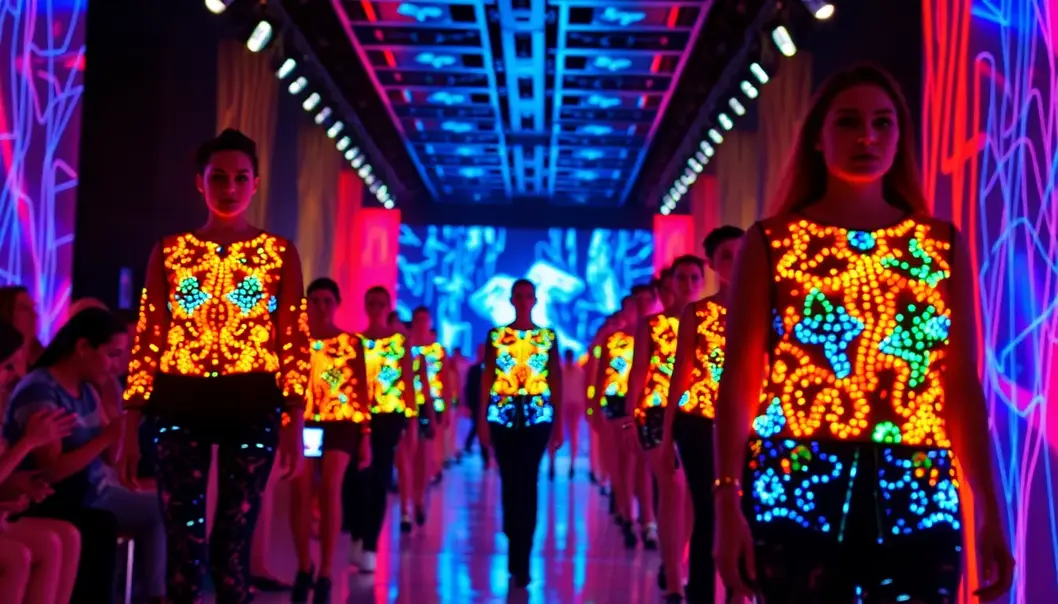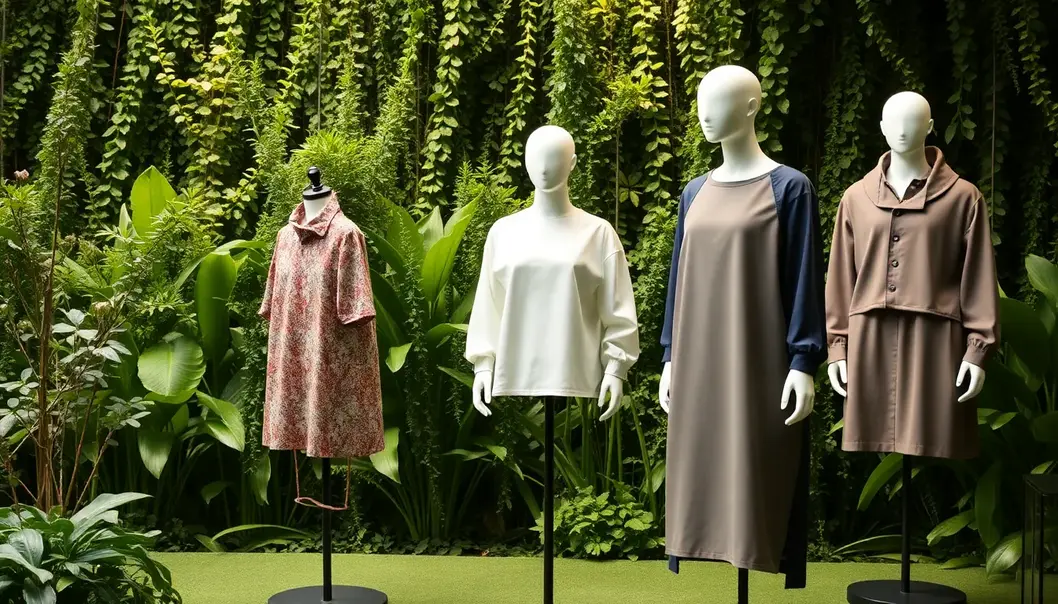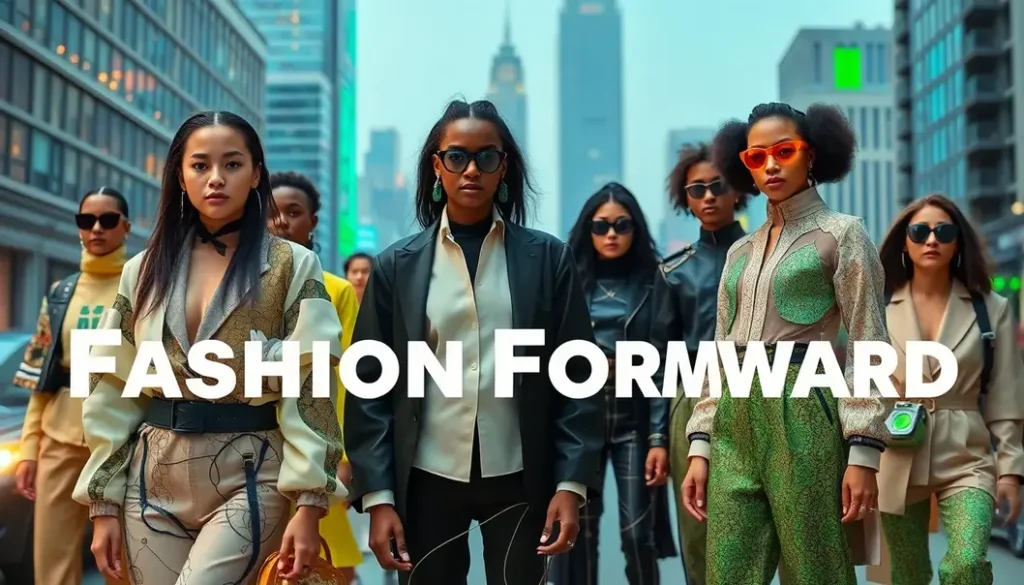Fashion aficionados and trend analysts, brace yourselves for a glimpse into the captivating world of 2025 fashion. As creativity and technology intertwine, the future promises a dynamic shift in how we perceive style. Designers are embracing sustainability and inclusivity, reinventing the core of the fashion industry. From digital clothing to adaptive wear, the trends of 2025 not only reflect society’s evolving needs but also set an inspiring canvas for artistic expression. This exploration offers insights into the upcoming patterns, textures, and innovations that will define the future, captivating both the practical and imaginative aspects of fashion.
The Rise of Digital and Wearable Tech

As we venture into 2025, digital technology is not merely a tool; it shapes how we conceive and experience fashion. At the forefront, augmented reality (AR) has seamlessly woven into our wardrobes. No longer confined to the realm of gaming, AR’s integration allows consumers to try on clothes virtually, adjusting sizes and colors with lifelike precision before making a purchase. This transformation enhances customer interaction with brands and minimizes return rates, reshaping the online shopping landscape.
Virtual fashion shows are now more than a spectacle; they are global, inclusive events. Designers employ digital platforms to stream shows, reaching a diverse audience well beyond geographic boundaries. These virtual events, punctuated by interactive elements, allow viewers to delve into collections intimately, offering unprecedented access to fashion’s creative heart. This evolution reduces the carbon footprint associated with traditional fashion shows, aligning with the industry’s broader move towards environmental consciousness.
The integration of wearable tech within fashion has surged, promising a future where garments do more than just clothe. Smart clothing is at the forefront, with fabrics embedded with technology that can alter color or texture in response to environmental stimuli or user-set preferences. Imagine a jacket that changes hues under different lighting or a dress that adapts its texture to suit the occasion—from a formal dinner to a casual outing—these innovations offer a dynamic element of personalization.
These garments do not merely look good; they provide functionality tailored to individual needs. Fitness enthusiasts don smart textiles that track biometric data, offering real-time feedback during workouts. These innovations merge fashion with health, appealing to tech-savvy consumers eager for efficiency. The implications are vast, mirroring a world where clothing transcends its traditional role, driven by the synergy between style and technology.
In the realm of communication, wearable tech is equally transformative. Imagine a jacket that alerts you of notifications or a scarf with built-in audio speakers, balancing aesthetic appeal with modern-day connectivity needs. Such developments speak to a new consumer ethos—one that values authenticity, practicality, and innovation.
This confluence of digital technology and fashion not only heralds a new era of creativity but also a shift towards a more inclusive and personalized fashion industry. As technology continues to evolve, we eagerly anticipate a world where the boundaries between physical and digital fashion blur, offering infinite possibilities for innovation and expression.
Sustainability and Adaptive Fashion: The New Norm

As the fashion world propels itself into 2025, sustainability and adaptive fashion are emerging as the twin pillars reshaping the industry. These movements have transcended mere trend status, embedding themselves deeply within the fabric of both consumer demand and the fashion ecosystem at large. Central to these shifts is the rise of biodegradable materials. Harnessing advances in bioengineering, designers are increasingly turning to fibers that decompose naturally. These materials range from plant-derived textiles to innovative biosynthetic fabrics, which break down without leaving harmful residues. The industry’s pivot towards such materials marks a conscientious departure from its historically high carbon footprint. With consumers growing more eco-conscious, their expectations are undeniably shifting towards garments that promise minimal environmental impact.
Zero-waste garments exemplify another radical transformation. By rethinking manufacturing processes, designers cut down waste drastically, embracing strategies such as utilizing entire fabric sheets without cutting or producing versatile pieces that adapt in form. This innovation not only aligns with ecological priorities but also satisfies a growing demand for versatile, multifunctional apparel. Shoppers are savvier, craving unique pieces that narrate stories of sustainability and craftsmanship.
Parallel to these trends, the inclusivity and functionality of fashion are gaining momentum. The adaptive fashion movement champions clothing designed for people of all shapes, sizes, and abilities. In recognizing the diverse spectrum of needs, designers are crafting collections accessible to everyone, from garments using adjustable mechanisms for people with physical disabilities to attire accommodating overlooked demographics.
Functionality, too, is not sacrificed at the altar of style. Clothes are being designed with practical features that enhance daily life. Think temperature-regulating fabrics or modular designs that transform for different occasions. As consumers increasingly prioritize conscious choices, brands are responding with collections that balance aesthetics with usability.
These advancements are prompting wider shifts in industry practices. Fashion houses are re-evaluating supply chains, embracing local production, and investing in technologies that optimize resource use. This realignment is not merely ethical; it makes business sense as well. Fashion brands finding innovative ways to cut costs in sustainable production often experience loyalty from a growing demographic of environmentally-conscious consumers.
As 2025 unfolds, it becomes apparent that sustainability and adaptive fashion are more than fleeting phenomena—they are foundational elements of a transformative era in fashion. Their influence is setting benchmarks, challenging every stakeholder—from manufacturers and designers to retail giants and consumers—to participate in a more responsible ecosystem. This evolution is akin to a second skin, signifying fashion’s compelling mission to harmonize style, inclusivity, and sustainability in a way that weaves together the many threads of our shared human experience.
Final words
The fashion trends of 2025 unveil a future where technology and sustainability are at the forefront of style evolution. With innovations like digital wearables and adaptive designs, the industry is poised to meet the needs of a diverse and environmentally conscious audience. As these trends take shape, they promise not only to redefine aesthetics but also the very essence of fashion. Stay ahead and embrace these shifts, for they hold the potential to transform wardrobes and mindsets alike.
Stay stylishly ahead with our trend analysis tools and resources.
Learn more: https://www.fashionforward2025.com/subscribe
About us
Fashion Forward 2025 offers exclusive insights into future trends, tools for trend analysis, and resources to help designers and fashion enthusiasts stay ahead in the ever-evolving fashion landscape.

